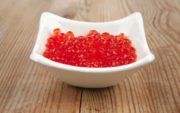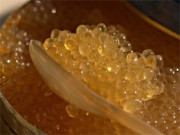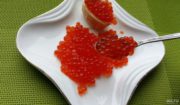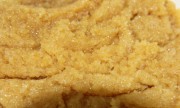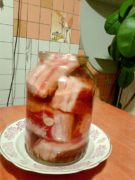Lightly salted red caviar: home salting methods - how to salt red fish caviar quickly and easily
A delicacy that always pleases the eye during a festive feast is a sandwich with butter and red caviar. Unfortunately, dishes with lightly salted red caviar are not so common in our diet. And the reason for this is the “biting” price for a very small volume of seafood. The situation can be smoothed out by purchasing an ungutted carcass of a female salmon from the store and salting its caviar yourself. All the intricacies of this process will be discussed in detail in our article.
Content
Stage one: choosing a female with eggs
I don’t think it’s worth talking about what degree of cooling to choose fish. Of course, the chilled version is preferable. But frozen fish is also fine. You will just have to tinker with it a little longer, since you will need to wait time for it to completely defrost. And the carcass should thaw slowly: 12 hours in the positive compartment of the refrigerator, and then 6-8 hours at room temperature. You shouldn’t rush things and try to speed up the defrosting process under running warm water or, even worse, in a microwave oven.
And now about the most important thing: how to choose a “girl” with caviar? When purchasing ungutted fish, you can be 100% sure that the females (no matter what size) store caviar in their abdomens. Salmon species are caught during the spawning period, so the correct choice of fish sex is very important.
Females are more “feminine”. They have a round body shape and a small head. Scales and fins are not clearly expressed in color. The appearance of the male is more warlike and predatory, which is especially emphasized by the pointed nose. These subtleties of fish appearance will definitely help you make the right choice. As a last resort, you can always contact a sales consultant who will confirm or refute your assumptions. True, this option will only work if the seller in the fish department is quite experienced.
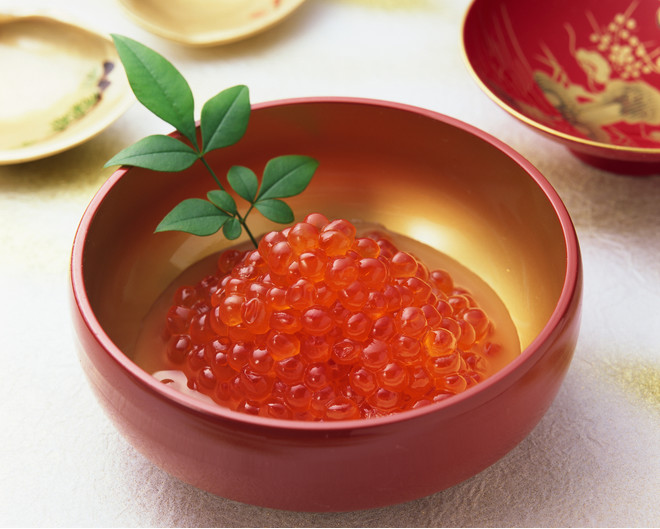
Stage two: caviar cleaning
The “bags” in which the caviar is located are called yastyk. This is a kind of chaff that must be removed before salting. There are several ways to clean caviar:
- Using a grid. The main condition: the cells must be 3 times larger than the eggs. It is very convenient to use a tennis racket or badminton racket at home. The caviar is transferred to a “grid” and “grinded” through large cells with gentle movements. All that remains is to rinse the caviar in water.
- Manually. The caviar is separated by hand, lightly rolling the eggs over the palms. The yastik rolls up and is removed.
- Using a skewer. The caviar bags are torn by hand, and their contents are poured with cool water. Using a roll stick, stir the caviar in one direction. During this process, the remaining film is wrapped around the stick and can be easily removed.
After cleaning, the eggs are rinsed in water and placed on a sieve with gauze. When the water has drained, the caviar is rolled over a gauze cloth several more times to finally get rid of any remaining film and damaged grains.
Watch the video of farmer Sabaneev about parsing yastyk with red caviar
Stage Three: Ambassador
In brine
Brine is a concentrated salt solution that is prepared both for salting caviar and fish meat. The technology for its preparation is simple: dissolve 2 tablespoons of coarse table salt and 1 large spoon of sugar in a glass of cool water. You can check the quality of the brine using a raw egg or a small peeled potato. With sufficient salt concentration, these products will float.
The caviar is placed in the curing solution for 7-9 minutes. In this case, the caviar will turn out lightly salted. If you keep the eggs in brine for 15 minutes, the degree of salting will be maximum.
The caviar is dried on a gauze cloth and then transferred to a small container, adding ½ teaspoon of vegetable oil.
Elena Puzanova in her video offers her recipe for salting pink salmon caviar
Dry salting
Washed eggs (100-150 grams) are sprinkled with a teaspoon of salt (with a small slide) and sugar, taken in half the amount. The caviar is gently mixed and left for 5 minutes. The stirring and five-minute infusion procedure is repeated 3 times. The finished lightly salted red caviar is transferred to a metal grid and the resulting liquid and the remainder of the curing mixture are allowed to drain.
The delicacy is transferred to a jar, the walls of which are greased with vegetable or olive oil. To make the caviar crumbly, oil (no more than ½ teaspoon) is added to the caviar itself.
The option of salting with food-grade potassium nitrate to preserve the rich color of eggs is described in detail in our article.
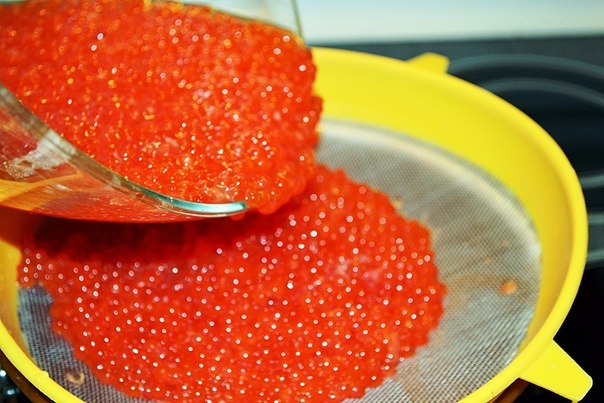
Stage four: storage
Store home-salted caviar in the refrigerator, covered. The timing depends on which of the two salting methods was used. The dry method allows you to store caviar in a sterile jar for 2-3 weeks, and using brine for no more than 2 days. Ready-made lightly salted red caviar can also be to freeze. A frozen product can be stored without losing its quality for up to six months.
In any case, homemade lightly salted red caviar is a feast for gourmets! Try using our tips to prepare this delicacy yourself.
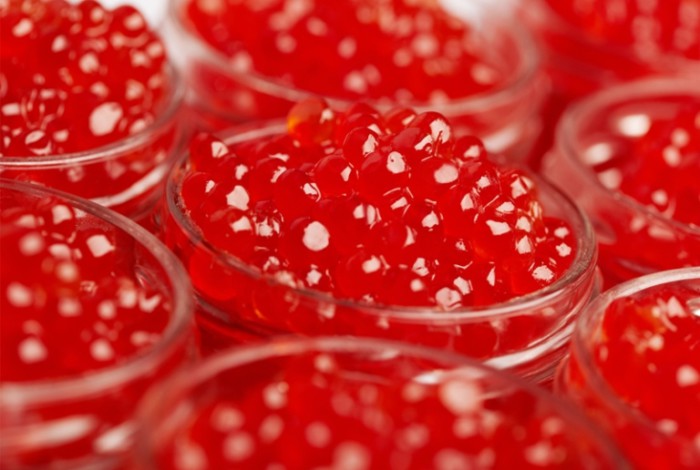
You shouldn’t stop at just salting caviar, lightly salted fillets of salmon fish species such as salmon, chum salmon or budget pink salmon, very delicious. We are confident that you will cope with this task. As an assistant, you can use materials from our website with interesting recipe collections.

